Abstract
All recognized cases (n = 55) of immune-mediated hemolytic anemia and immune-mediated thrombocytopenia in dogs presented to the Western College of Veterinary Medicine from 1969 through 1983 were reviewed. Specific areas of concern were: association with other conditions, therapeutic response, prognosis, relapse rate and final outcome. Of these 55 cases, 19 were immune-mediated hemolytic anemia, 26 were immune-mediated thrombocytopenia and 10 were both immune-mediated hemolytic anemia and thrombocytopenia. Females were slightly over-represented and the mean age was 6.4 years. Therapy consisted of various combinations of immuno-suppressive drugs and in some cases, whole blood transfusion and splenectomy. No firm conclusions could be made regarding therapeutic efficacy, as a result of variation in treatment protocol and the occasional unavailability of follow-up data. Well over half of all cases were diagnosed as idiopathic. Precipitating factors or diseases most frequently implicated in secondary immune-mediated thrombocytopenia or hemolytic anemia were: recent vaccination, drug therapy, obstetrical complications, stress, recent viral infection and neoplasia. Twice as many cases of immune-mediated hemolytic anemia were seen in the cooler months (October to March), although this could not be related to antibody class or thermal reactivity. Immune-mediated thrombocytopenia both as a single disease and combined with immune-mediated hemolytic anemia had no seasonal incidence. History, clinical findings and hematological and clinical chemistry findings were consistent with data previously reported, with the exception of icterus, which appeared to be of higher incidence than most reports, being present in almost 50% of immune-mediated hemolytic anemia cases. Just over half of all dogs survived, although the survival rate was highest for immune-mediated hemolytic anemia, followed closely by immune-mediated thrombocytopenia and lowest for the combined disease. Immune-mediated thrombocytopenia most frequently ran a relapsing course requiring long-term or intermittent therapy.
Keywords: Immune-mediated hemolytic anemia, immune-mediated thrombocytopenia, dogs, retrospective study
Full text
PDF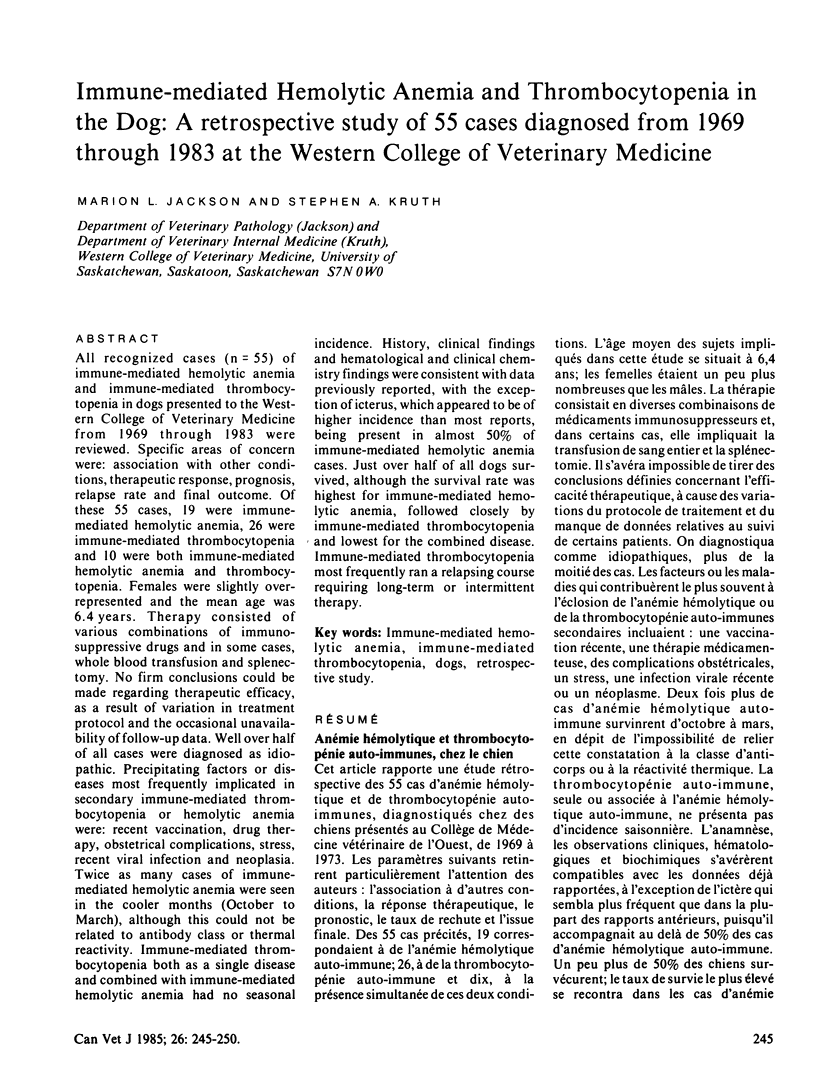
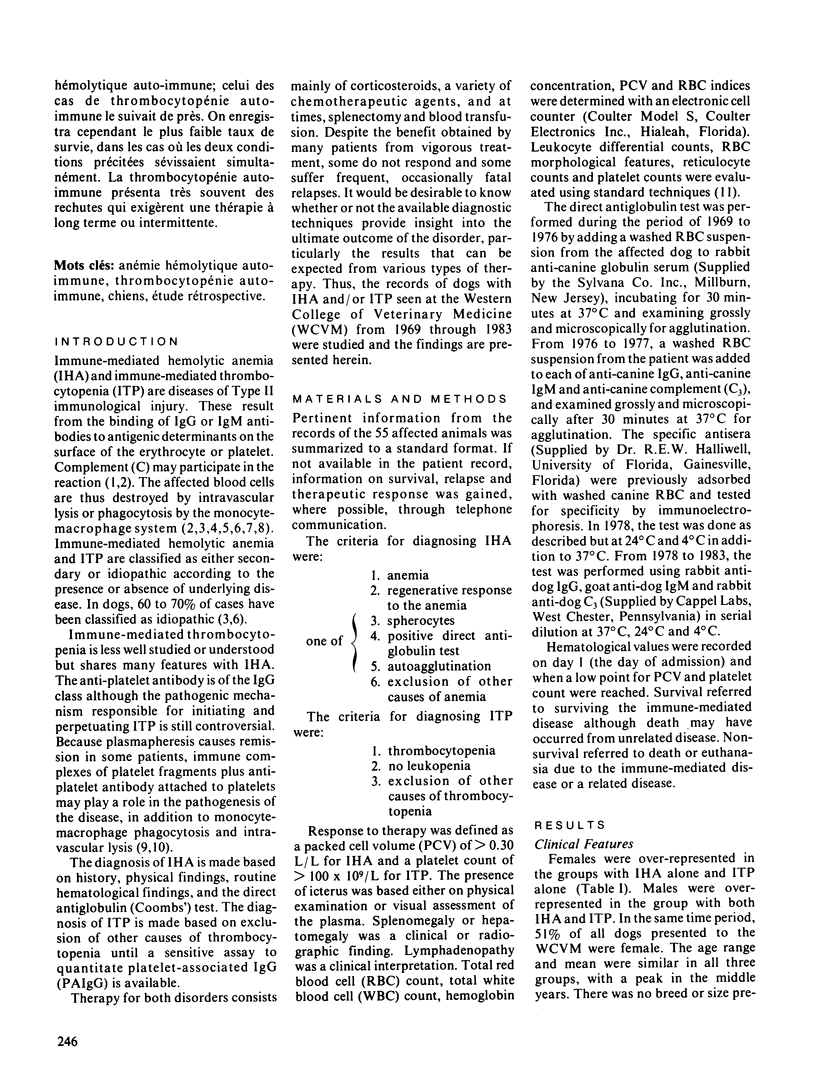
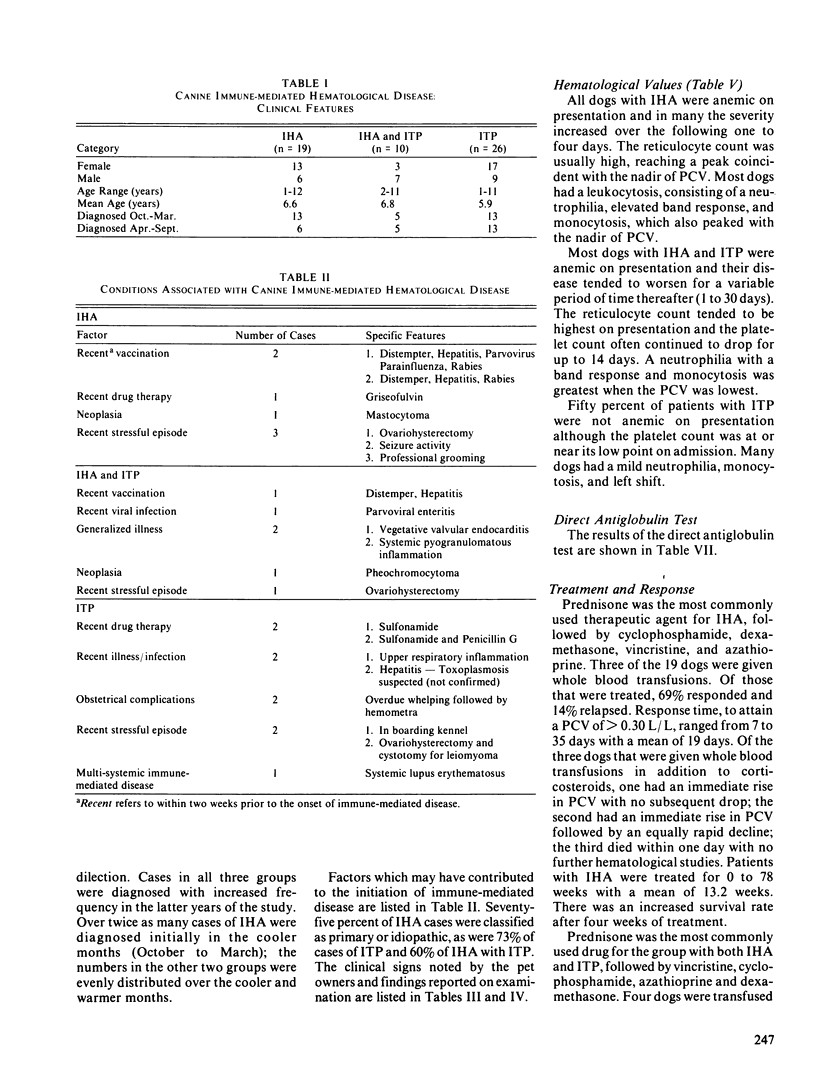
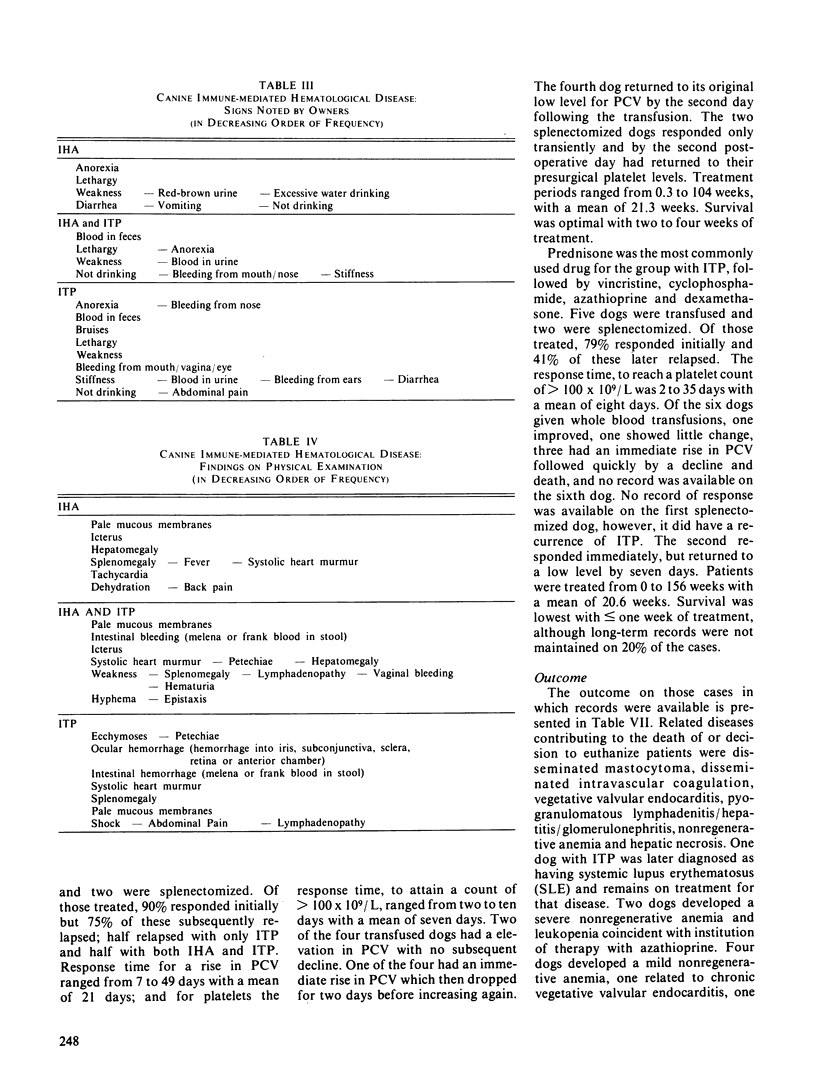
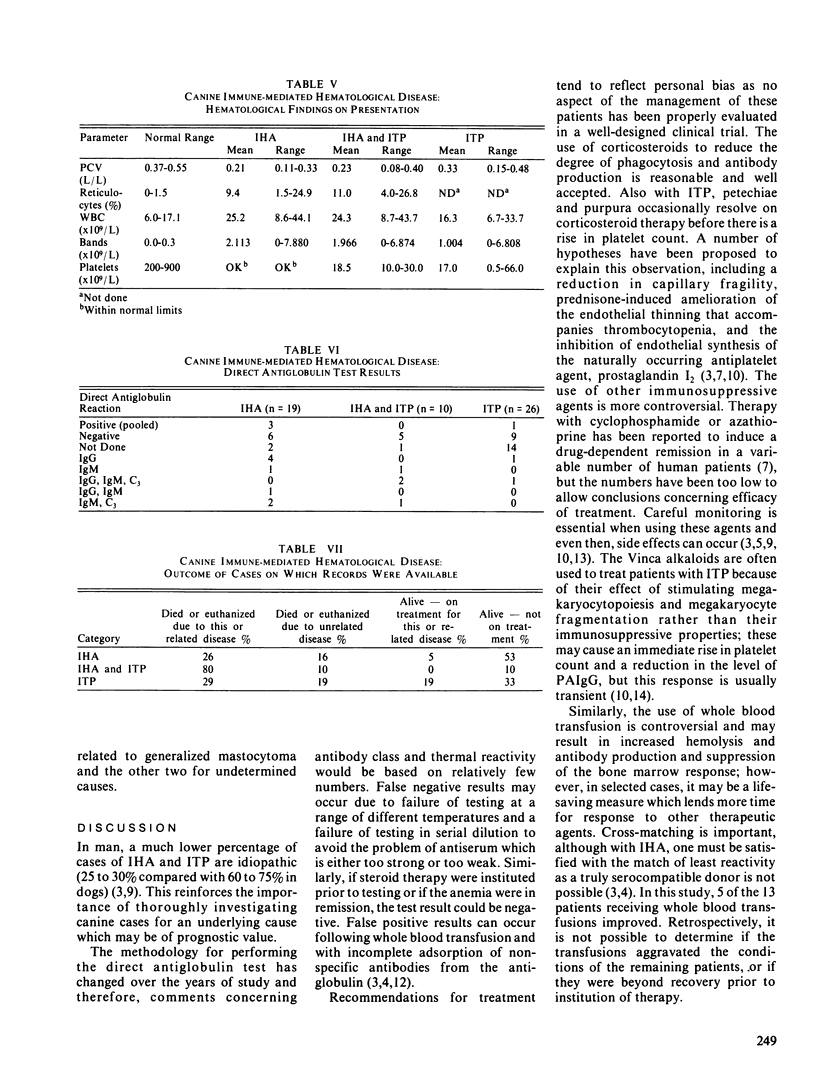
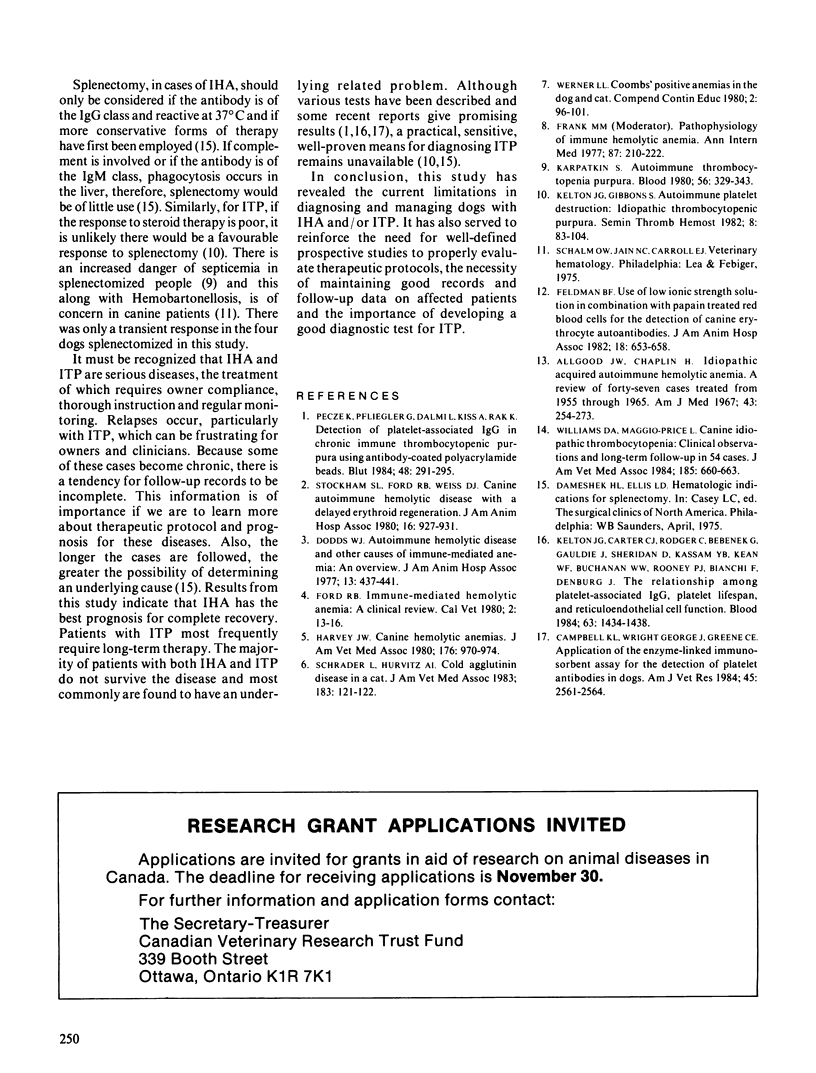
Selected References
These references are in PubMed. This may not be the complete list of references from this article.
- Allgood J. W., Chaplin H., Jr Idiopathic acquired autoimmune hemolytic anemia. A review of forty-seven cases treated from 1955 through 1965. Am J Med. 1967 Aug;43(2):254–273. doi: 10.1016/0002-9343(67)90168-4. [DOI] [PubMed] [Google Scholar]
- Campbell K. L., George J. W., Greene C. E. Application of the enzyme-linked immunosorbent assay for the detection of platelet antibodies in dogs. Am J Vet Res. 1984 Dec;45(12):2561–2564. [PubMed] [Google Scholar]
- Harvey J. W. Canine hemolytic anemias. J Am Vet Med Assoc. 1980 May 15;176(10 Pt 1):970–974. [PubMed] [Google Scholar]
- Karpatkin S. Autoimmune thrombocytopenic purpura. Blood. 1980 Sep;56(3):329–343. [PubMed] [Google Scholar]
- Kelton J. G., Carter C. J., Rodger C., Bebenek G., Gauldie J., Sheridan D., Kassam Y. B., Kean W. F., Buchanan W. W., Rooney P. J. The relationship among platelet-associated IgG, platelet lifespan, and reticuloendothelial cell function. Blood. 1984 Jun;63(6):1434–1438. [PubMed] [Google Scholar]
- Kelton J. G., Gibbons S. Autoimmune platelet destruction: idiopathic thrombocytopenic purpura. Semin Thromb Hemost. 1982 Apr;8(2):83–104. doi: 10.1055/s-2007-1005045. [DOI] [PubMed] [Google Scholar]
- Pecze K., Pfliegler G., Dalmi L., Kiss A., Rak K. Detection of platelet-associated IgG in chronic immune thrombocytopenic purpura using antibody-coated polyacrylamide beads. Blut. 1984 May;48(5):291–295. doi: 10.1007/BF00320400. [DOI] [PubMed] [Google Scholar]
- Schrader L. A., Hurvitz A. I. Cold agglutinin disease in a cat. J Am Vet Med Assoc. 1983 Jul 1;183(1):121–122. [PubMed] [Google Scholar]
- Williams D. A., Maggio-Price L. Canine idiopathic thrombocytopenia: clinical observations and long-term follow-up in 54 cases. J Am Vet Med Assoc. 1984 Sep 15;185(6):660–663. [PubMed] [Google Scholar]


